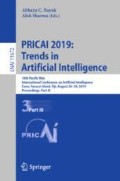Abstract
De novo peptide sequencing algorithms have been widely used in proteomics to analyse tandem mass spectra (MS/MS) and assign them to peptides, but quality-control methods to evaluate the confidence of de novo peptide sequencing are lagging behind. A fundamental part of a quality-control method is the scoring function used to evaluate the quality of peptide-spectrum matches (PSMs). Here, we propose a genetic programming (GP) based method, called GP-PSM, to learn a PSM scoring function for improving the rate of confident peptide identification from MS/MS data. The GP method learns from thousands of MS/MS spectra. Important characteristics about goodness of the matches are extracted from the learning set and incorporated into the GP scoring functions. We compare GP-PSM with two methods including Support Vector Regression (SVR) and Random Forest (RF). The GP method along with RF and SVR, each is used for post-processing the results of peptide identification by PEAKS, a commonly used de novo sequencing method. The results show that GP-PSM outperforms RF and SVR and discriminates accurately between correct and incorrect PSMs. It correctly assigns peptides to 10% more spectra on an evaluation dataset containing 120 MS/MS spectra and decreases the false positive rate (FPR) of peptide identification.
Access this chapter
Tax calculation will be finalised at checkout
Purchases are for personal use only
References
Yang, H., et al.: pSite: amino acid confidence evaluation for quality control of De Novo peptide sequencing and modification site localization. J. Proteome Res. 17(1), 119–128 (2017)
Colinge, J., Bennett, K.L.: Introduction to computational proteomics. PLoS Comput. Biol. 3(7), e114 (2007)
Fenyö, D., Beavis, R.C.: A method for assessing the statistical significance of mass spectrometry-based protein identifications using general scoring schemes. Anal. Chem. 75(4), 768–774 (2003)
Keller, A., Nesvizhskii, A.I., Kolker, E., Aebersold, R.: Empirical statistical model to estimate the accuracy of peptide identifications made by MS/MS and database search. Anal. Chem. 74(20), 5383–5392 (2002)
Babovic, V., Keijzer, M.: Genetic programming as a model induction engine. J. Hydroinformatics 2(1), 35–60 (2000)
Smits, G., Kotanchek, M.: Pareto-front exploitation in symbolic regression. In: O’Reilly, U.M., Yu, T., Riolo, R., Worzel, B. (eds.) Genetic Programming Theory and Practice II. Genetic Programming, vol. 8, pp. 283–299. Springer, Boston (2005). https://doi.org/10.1007/0-387-23254-0_17
Ong, C.-S., Huang, J.-J., Tzeng, G.-H.: Building credit scoring models using genetic programming. Expert Syst. Appl. 29(1), 41–47 (2005)
Lee, Y.-S., Tong, L.-I.: Forecasting energy consumption using a grey model improved by incorporating genetic programming. Energy Convers. Manag. 52(1), 147–152 (2011)
Harman, M., Jia, Y., Krinke, J., Langdon, W.B., Petke, J., Zhang, Y.: Search based software engineering for software product line engineering: a survey and directions for future work. In: Proceedings of the 18th International Software Product Line Conference, vol. 1, pp. 5–18. ACM (2014)
Langdon, W.B., Poli, R., McPhee, N.F., Koza, J.R.: Genetic programming: an introduction and tutorial, with a survey of techniques and applications. In: Fulcher, J., Jain, L.C. (eds.) Computational Intelligence: A Compendium. SCI, vol. 115, pp. 927–1028. Springer, Heidelberg (2008). https://doi.org/10.1007/978-3-540-78293-3_22
Beardsley, R.L., Herrmann, K.A., Hilderbrand, A.E.: Peptide fragmentation overview. In: Principles of Mass Spectrometry Applied to Biomolecules, vol. 10, p. 279 (2006)
Azari, S., Xue, B., Zhang, M., Peng, L.: GA-Novo: De Novo peptide sequencing via tandem mass spectrometry using genetic algorithm. In: Kaufmann, P., Castillo, P.A. (eds.) EvoApplications 2019. LNCS, vol. 11454, pp. 72–89. Springer, Cham (2019). https://doi.org/10.1007/978-3-030-16692-2_6
Eng, J.K., McCormack, A.L., Yates, J.R.: An approach to correlate tandem mass spectral data of peptides with amino acid sequences in a protein database. J. Am. Soc. Mass Spectrom. 5(11), 976–989 (1994)
Fortin, F.-A., De Rainville, F.-M., Gardner, M.-A., Parizeau, M., Gagné, C.: DEAP: evolutionary algorithms made easy. J. Mach. Learn. Res. 13, 2171–2175 (2012)
Wessels, H.J.C.T., et al.: A comprehensive full factorial LC-MS/MS proteomics benchmark data set. Proteomics 12(14), 2276–2281 (2012)
Cottrell, J.S., Perkins, D.N., Pappin, D.J., Creasy, D.M.: Probability-based protein identification by searching sequence databases using mass spectrometry data. Electrophoresis 20(18), 3551–3567 (1999)
Ma, B., et al.: Peaks: powerful software for peptide de novo sequencing by tandem mass spectrometry. Rapid Commun. Mass Spectrom. 17(20), 2337–2342 (2003)
Author information
Authors and Affiliations
Corresponding author
Editor information
Editors and Affiliations
Rights and permissions
Copyright information
© 2019 Springer Nature Switzerland AG
About this paper
Cite this paper
Azari, S., Xue, B., Zhang, M., Peng, L. (2019). Improving the Results of De novo Peptide Identification via Tandem Mass Spectrometry Using a Genetic Programming-Based Scoring Function for Re-ranking Peptide-Spectrum Matches. In: Nayak, A., Sharma, A. (eds) PRICAI 2019: Trends in Artificial Intelligence. PRICAI 2019. Lecture Notes in Computer Science(), vol 11672. Springer, Cham. https://doi.org/10.1007/978-3-030-29894-4_38
Download citation
DOI: https://doi.org/10.1007/978-3-030-29894-4_38
Published:
Publisher Name: Springer, Cham
Print ISBN: 978-3-030-29893-7
Online ISBN: 978-3-030-29894-4
eBook Packages: Computer ScienceComputer Science (R0)

